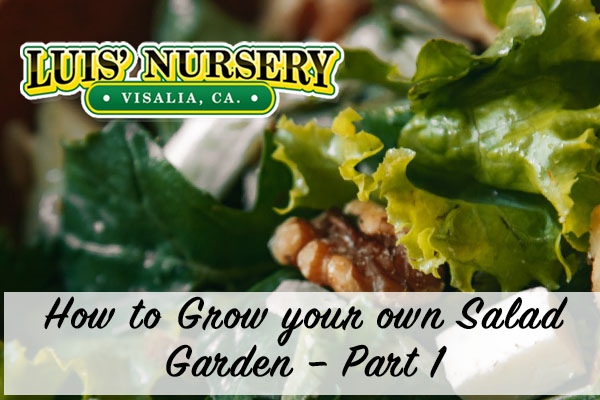This time of year, many of us are starting to think about taking off some of that winter weight and getting ready for bathing suit season. Salads are often a go to for most ‘healthy eaters’ and can be incredibly easy and fun to make. Sometimes we find ourselves spending a fortune on our salad ingredients as we get more and more creative building our salads. One way to save money is to grow your own salad garden and have the ingredients at home. You can choose items that you would normally add and grab them right from your salad garden.
What is salad gardening?
Homestead salads are more nutrient dense and can be more flavorful, colorful and diverse than what you would buy at the store. Salad gardening is a form of vegetable gardening, but with a purpose. Instead of growing with one harvest in mind, your goal is to have a continuous supply of different ingredients throughout the year. A yummy salad has a variety of greens, herbs, and additions like tomatoes, cucumbers, radishes and onions. Ooh…you can even add edible flowers for some fun.
What seeds do you choose?
Lettuce can be picky when it comes to seasons, so you’ll want to choose seasonally appropriate seeds. Cool weather is something that most lettuces prefer. If it’s too hot your seeds will bolt, or flower and seed, which makes them bitter. If it’s too cold your lettuce will blacken and shrivel and be useless. Taking these thoughts into consideration you would want to select a variety of seeds that can substitute for leaf lettuces when needed and they still will carry that dressing just fine. In colder seasons you can grow mustard, arugula, kale, and dandelions. When it’s hotter like here in Visalia, you can plant slow-bolt lettuce varieties. You can add in spinach and even utilize leaves from plants like sweet potatoes, collards, turnips, and chards in your salads.
In Visalia our summers can get hot, and that can present challenges when growing giant heads of lettuce. If you focus on cut greens, you can shorten your growing time to harvest. Cutting often will reduce plant energy and reduce bolting.
What’s the plan?
So, what’s the best plan of action? The first thing you will want to do is plan out the salad garden space. Take into consideration how much salad you want and how much space you have. You also want to be sure to have nitrogen-rich soil with a pH of 6.5 for best results. Compost and veggie soil mixes can give your beds a leg up for production.
One recommendation is to buy mixed leaf lettuce seeds in bulk. You can frequently plant them through the season, and they will remain in supply vs the small packs. Once you have your salad seeds you will want to heavily over seed your area. Scatter them on top of soil and water them in, so they settle shallower. Floating row covers might be a good idea for faster germination and pest protection. You don’t want slow-germinating seeds as they will be the slowest producers in the long run.
Water regularly and fertilize as needed. The extra plants that you harvest in between your lettuce can be harvested when they are about 2 inches tall. You can cut the leaves and leave the baby roots in the ground. The lettuce can start being harvested at 4-6 inches tall. Leave one inch of green above ground or “Mow your lettuce bed.”
In the next part of this article, we will discuss how often you should reseed and how to grow and harvest your fixings to create the perfect salad! If you have any questions, please come on over to the nursery and we can help you find the best seeds to help you grow your own salad garden.

